Spark Creativity with Design Thinking
Design thinking is a powerful and innovative approach to problem-solving that puts human needs at the center of the design process. It is a method that combines empathy, creativity, and rationality to develop groundbreaking solutions to complex problems. In this article, we will explore how to spark creativity using design thinking in five simple steps.
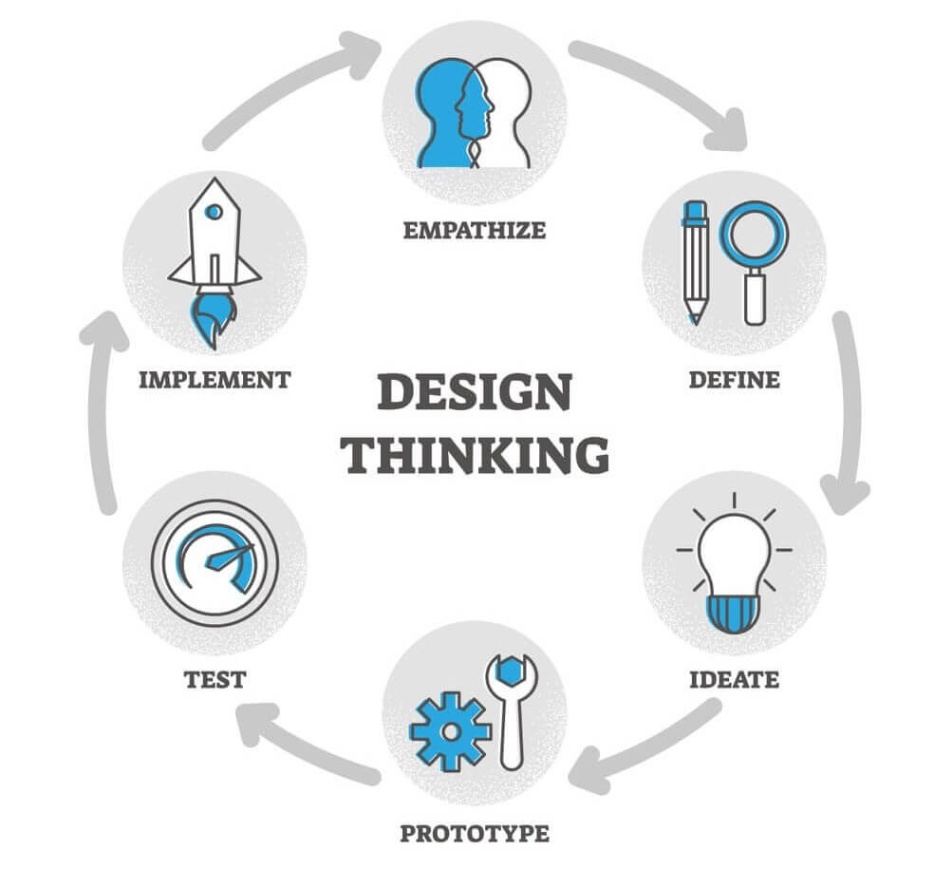
Image Source: unichrone.com
Step 1: Empathize with Your Users
The first step in design thinking is to empathize with the users you are designing for. This involves putting yourself in their shoes, understanding their needs, and gaining insights into their behaviors and preferences. By empathizing with your users, you can uncover valuable insights that will guide your design process and help you create solutions that truly address their needs.
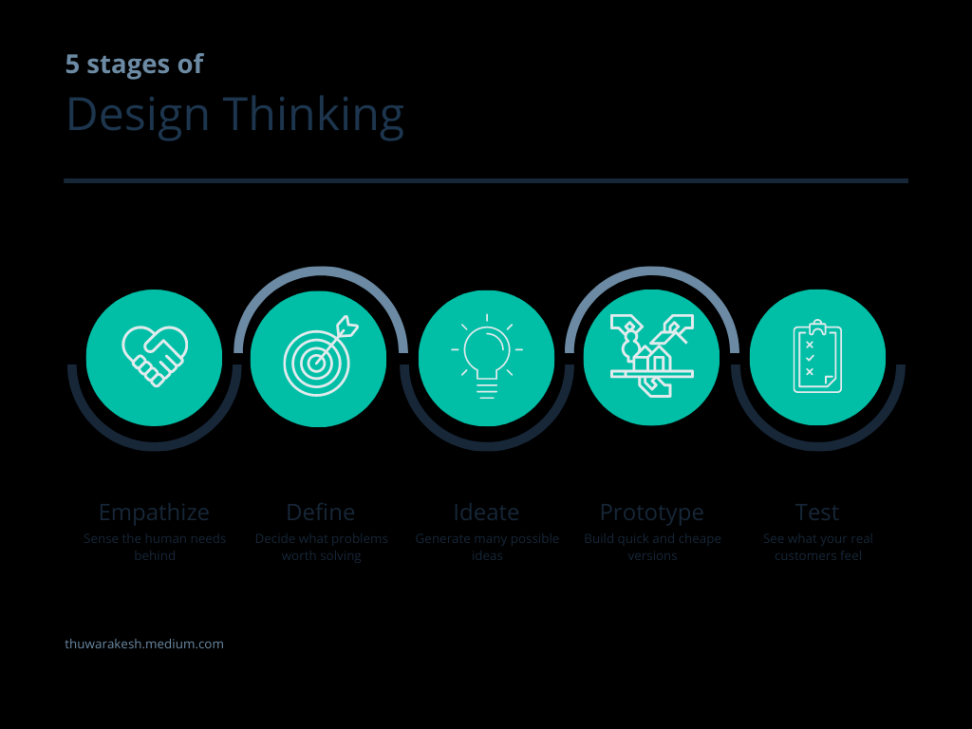
Image Source: medium.com
Step 2: Define the Problem
Once you have gained a deep understanding of your users, the next step is to define the problem you are trying to solve. This involves identifying the key challenges and opportunities that exist within the problem space and framing it in a way that inspires creative thinking. By clearly defining the problem, you can focus your efforts on developing solutions that are relevant and impactful.
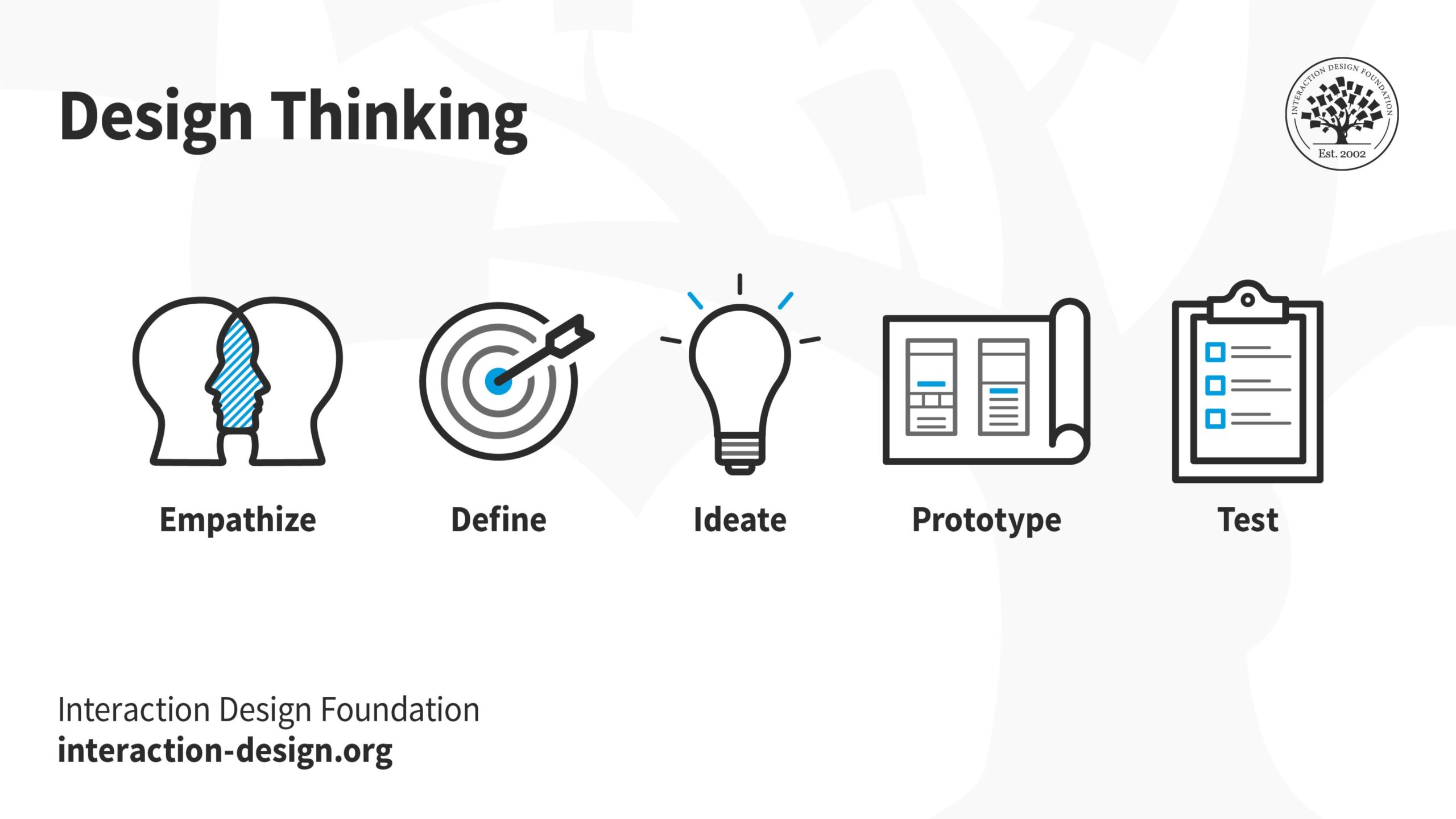
Image Source: interaction-design.org
Step 3: Ideate and Brainstorm
With a clear understanding of the problem at hand, it’s time to generate ideas and brainstorm creative solutions. The ideation phase is all about generating a wide range of ideas, no matter how wild or unconventional they may seem. By encouraging a diverse and collaborative brainstorming session, you can spark creativity and uncover innovative solutions that you may not have considered otherwise.
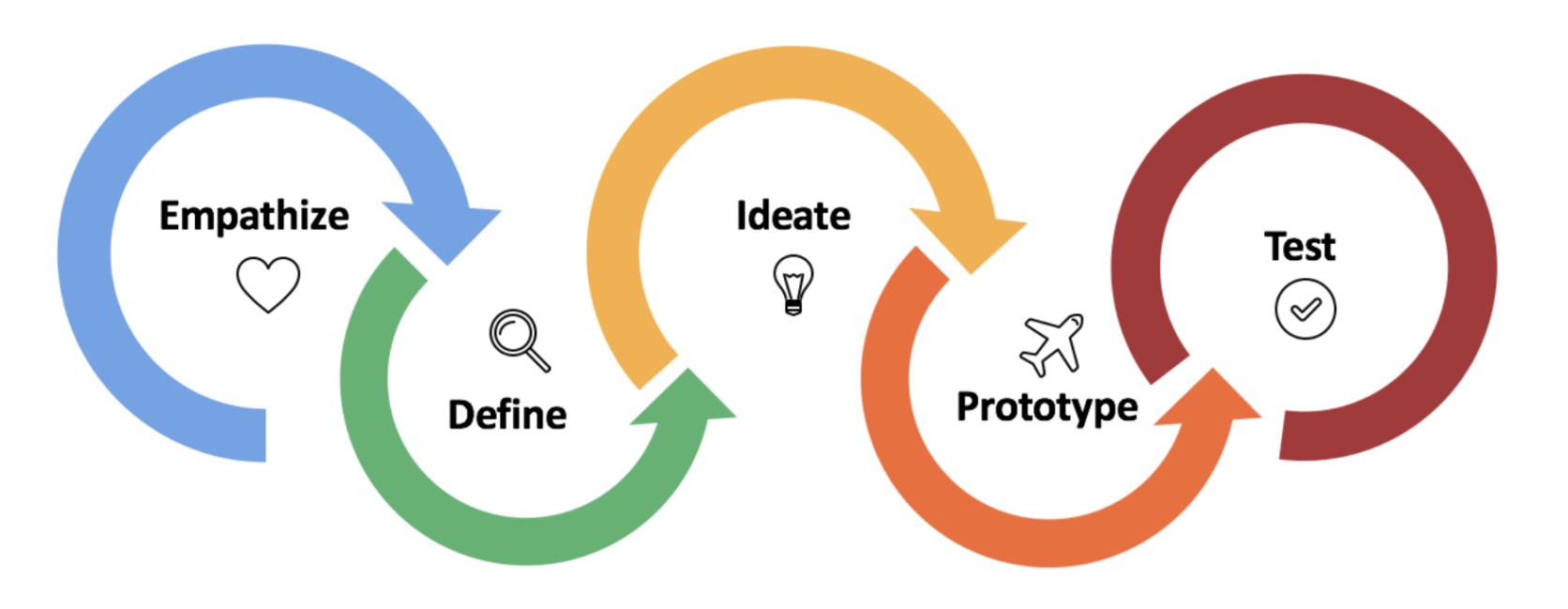
Image Source: cloudfront.net
Step 4: Prototype Your Ideas
Once you have a collection of ideas, it’s time to bring them to life through prototyping. Prototyping involves creating rough, low-fidelity representations of your ideas that allow you to test and refine them quickly and inexpensively. By prototyping your ideas, you can gather feedback from users, iterate on your designs, and refine your solutions before investing in more costly and time-consuming development.
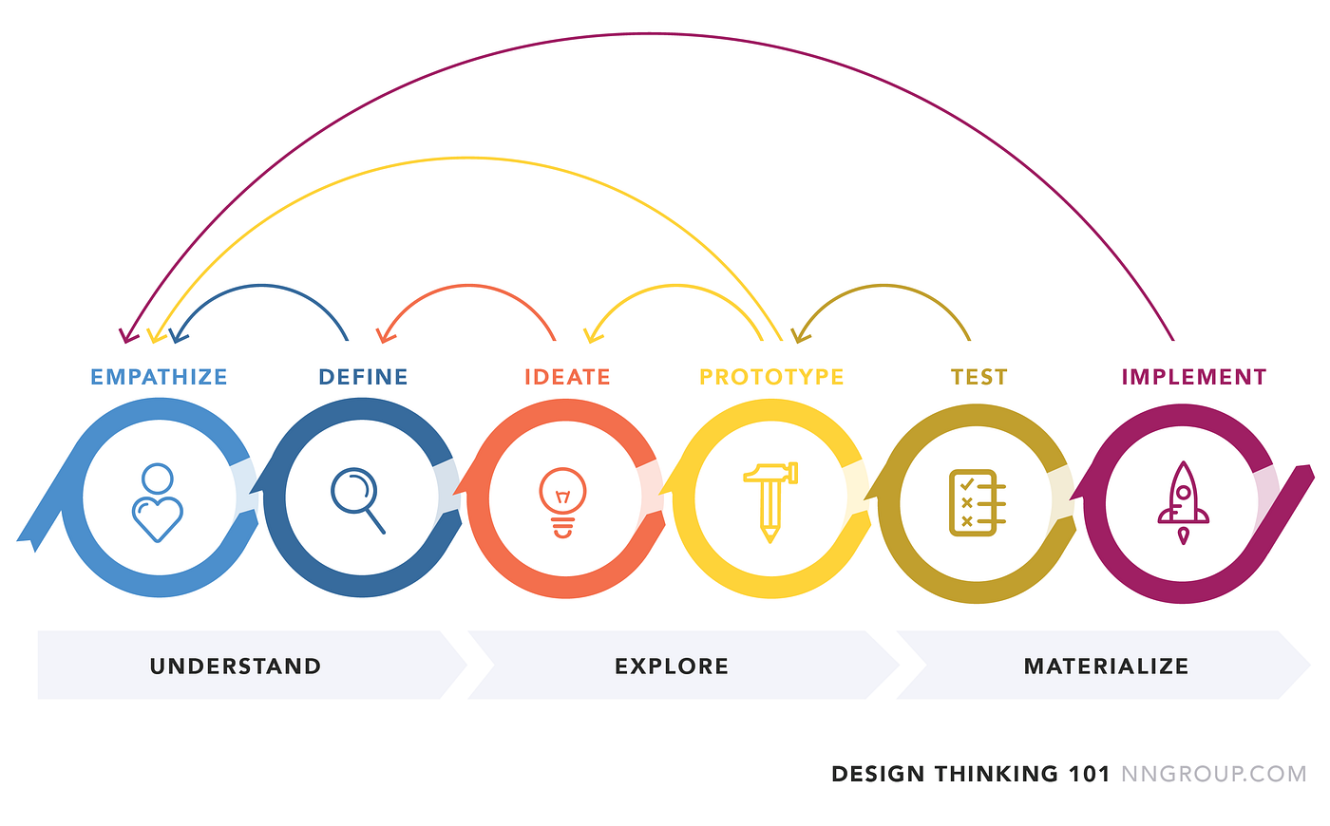
Image Source: medium.com
Step 5: Test and Iterate
The final step in the design thinking process is to test your prototypes with real users and gather feedback to inform further iterations. By observing how users interact with your prototypes, you can identify potential pain points, validate your assumptions, and make informed decisions about how to improve your designs. Through an iterative process of testing and refinement, you can ensure that your solutions are truly user-centered and effective.
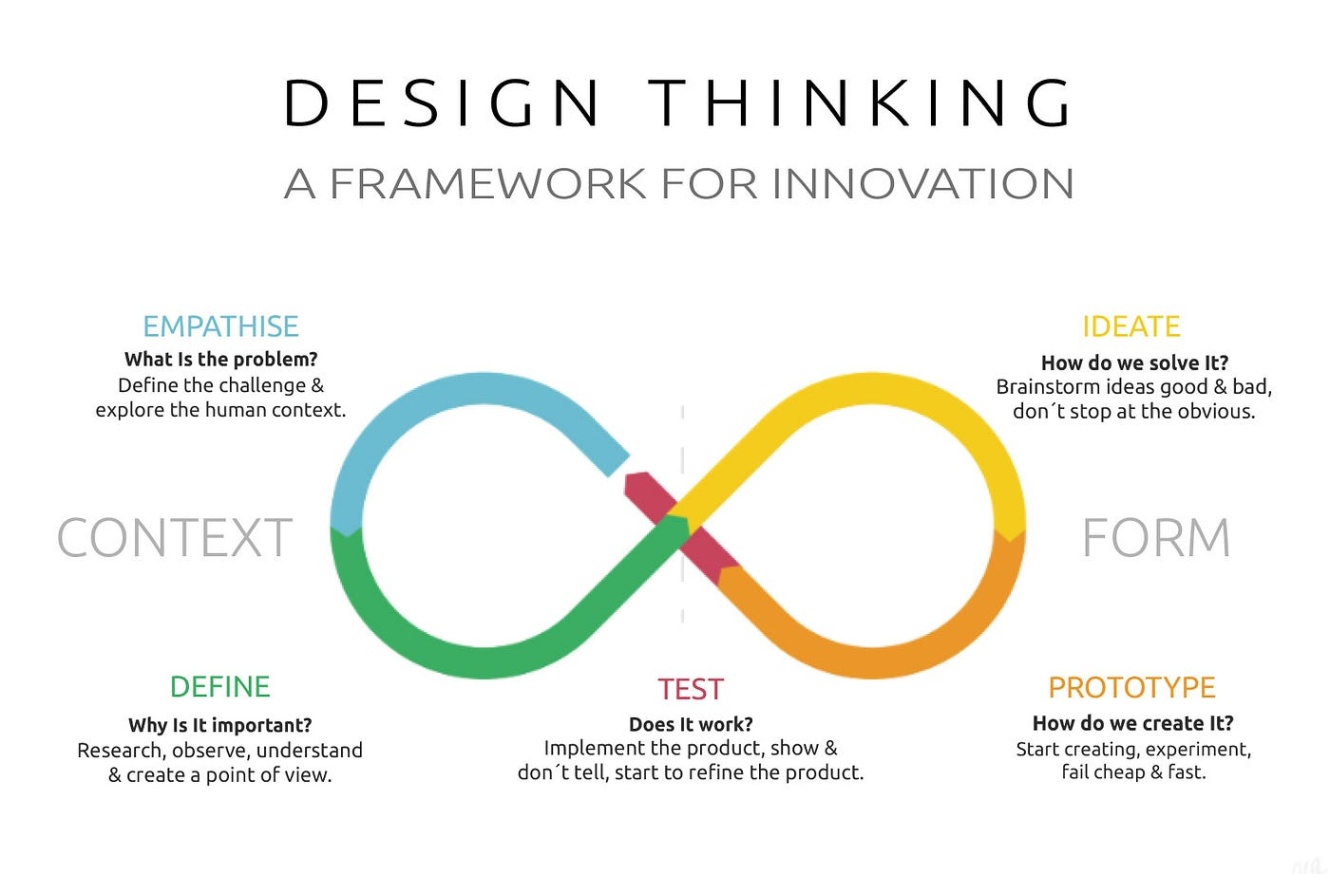
Image Source: medium.com
In conclusion, design thinking is a powerful methodology that can help you spark creativity, develop innovative solutions, and create meaningful experiences for your users. By following these five simple steps – empathizing with your users, defining the problem, ideating and brainstorming, prototyping your ideas, and testing and iterating – you can master the art of design thinking and transform your ideas into impactful solutions. So go ahead, unleash your creativity, and start designing with empathy and innovation in mind.
Brainstorm Brilliant Ideas
Design thinking is a powerful tool that can help individuals and teams generate innovative solutions to complex problems. At the heart of design thinking is the ideation phase, where brainstorming brilliant ideas takes center stage. This crucial step is where creativity flourishes, and where the seeds of groundbreaking solutions are planted.
To master the art of brainstorming brilliant ideas, it is essential to create a conducive environment that fosters creativity and encourages free thinking. Here are 5 simple steps to help you unleash your creative potential and generate innovative ideas:
1. Start with Empathy: Before diving into brainstorming sessions, it is important to first understand the needs and pain points of your target audience. Empathy is the key to designing solutions that truly resonate with users. Put yourself in their shoes, and try to see the world from their perspective. This will help you identify opportunities for innovation and empathize with the end users.
2. Diverge and Converge: When brainstorming ideas, it is important to first diverge and explore a wide range of possibilities before converging on the most promising solutions. Allow yourself to think outside the box and consider unconventional ideas. This is the time to let your imagination run wild and explore all possibilities without judgment.
3. Encourage Collaboration: Collaboration is at the heart of design thinking, and brainstorming sessions are the perfect opportunity to harness the collective intelligence of your team. Encourage open communication and create a safe space for idea sharing. Embrace diversity of thought and welcome different perspectives to spark creativity and generate innovative solutions.
4. Use Visual Tools: Visual tools such as mind maps, sketches, and mood boards can help stimulate creativity and make abstract ideas more tangible. Use visuals to capture ideas visually and facilitate communication within the team. Visual tools can also help you see connections between different ideas and inspire new insights.
5. Embrace Iteration: The ideation phase is not about finding the perfect solution right away, but rather about exploring different possibilities and refining your ideas through iteration. Embrace the process of trial and error, and be open to feedback and suggestions from your team. Iterate on your ideas based on user feedback and continue to refine them until you have a truly innovative solution.
By following these 5 simple steps, you can master the art of brainstorming brilliant ideas and unleash your creative potential. Remember, creativity is a muscle that can be strengthened with practice, so don’t be afraid to experiment and push the boundaries of what is possible. Embrace the spirit of design thinking and watch as your brilliant ideas transform into innovative solutions that make a real impact.
Transform Ideas into Prototypes
Have you ever had a brilliant idea that you just couldn’t wait to bring to life? The process of transforming ideas into prototypes is an essential step in the design thinking process. It allows you to test and iterate on your ideas, ultimately leading to a more refined and successful final product. In this article, we will explore how you can effectively transform your ideas into prototypes in five simple steps.
Step 1: Define Your Objective
Before you can begin creating a prototype, it’s important to clearly define your objective. What problem are you trying to solve? What are your goals for this prototype? By having a clear objective in mind, you can ensure that your prototype will be focused and effective in addressing the problem at hand.
Step 2: Brainstorm Ideas
Once you have defined your objective, it’s time to brainstorm ideas for your prototype. This is where you can let your creativity run wild and explore different possibilities. Remember, there are no bad ideas in brainstorming – every idea has the potential to spark new insights and innovations. Consider using techniques such as mind mapping, sketching, or role-playing to generate a wide range of ideas.
Step 3: Develop a Concept
After you have generated a variety of ideas, it’s time to develop a concept for your prototype. This involves selecting the most promising ideas and combining them into a coherent and feasible design. Consider factors such as feasibility, viability, and desirability when developing your concept. Keep in mind that your concept is not set in stone – it can and should evolve as you move through the prototyping process.
Step 4: Create a Low-Fidelity Prototype
With your concept in hand, it’s time to create a low-fidelity prototype. This could be a simple sketch, a paper prototype, or a digital mockup. The goal of a low-fidelity prototype is to quickly and cheaply test your concept and gather feedback. By creating a low-fidelity prototype, you can identify any potential flaws or improvements early on in the design process.
Step 5: Iterate and Refine
Once you have tested your low-fidelity prototype and gathered feedback, it’s time to iterate and refine your design. This involves making adjustments based on the feedback received and creating a higher-fidelity prototype. Consider using tools such as 3D modeling software, prototyping software, or rapid prototyping techniques to create a more polished and realistic prototype. Continue to iterate and refine your design until you are satisfied with the results.
Transforming ideas into prototypes is a crucial step in the design thinking process. By following these five simple steps, you can effectively bring your ideas to life and create innovative solutions to complex problems. Remember to stay open to new possibilities, embrace failure as a learning opportunity, and have fun with the prototyping process. Happy prototyping!
Master the Art of Design Thinking
Design thinking is a powerful process that can help individuals and teams come up with innovative solutions to complex problems. From ideation to prototyping, mastering design thinking involves following a series of steps to ensure that creativity flows and ideas are turned into tangible prototypes. In this article, we will explore how you can master the art of design thinking in five simple steps.
Step 1: Empathize with Your Users
The first step in mastering design thinking is to empathize with your users. This involves putting yourself in the shoes of the people who will be using your product or service and understanding their needs, desires, and pain points. By truly understanding your users, you can create solutions that are meaningful and relevant to them.
Step 2: Define the Problem
Once you have a clear understanding of your users, the next step is to define the problem that you are trying to solve. This involves distilling the insights gathered during the empathy phase into a specific problem statement that will guide the design process. By clearly defining the problem, you can ensure that your solutions are focused and impactful.
Step 3: Ideate Creative Solutions
With a well-defined problem statement in hand, it’s time to start generating ideas. This is the ideation phase of design thinking, where creativity is unleashed and brainstorming sessions are held to come up with as many solutions as possible. The key to successful ideation is to encourage wild and out-of-the-box thinking, without judgment or criticism.
Step 4: Prototype Your Ideas
Once you have a range of ideas to work with, it’s time to start prototyping. Prototyping involves creating rough, low-fidelity versions of your ideas to test and iterate on. This could involve anything from sketching out a design on paper to creating a physical model of your product. The goal of prototyping is to quickly and cheaply test your ideas and gather feedback from users.
Step 5: Test and Iterate
The final step in mastering design thinking is to test your prototypes with real users and iterate on your designs based on their feedback. This involves gathering user feedback, analyzing the results, and making improvements to your prototypes. The testing and iteration phase is crucial for refining your ideas and ensuring that your final product meets the needs of your users.
By following these five simple steps, you can master the art of design thinking and create innovative solutions to complex problems. From empathizing with your users to testing and iterating on your prototypes, design thinking is a powerful process that can help you unleash your creativity and bring your ideas to life. So why not give it a try and see where your imagination takes you?
5 stages of design thinking